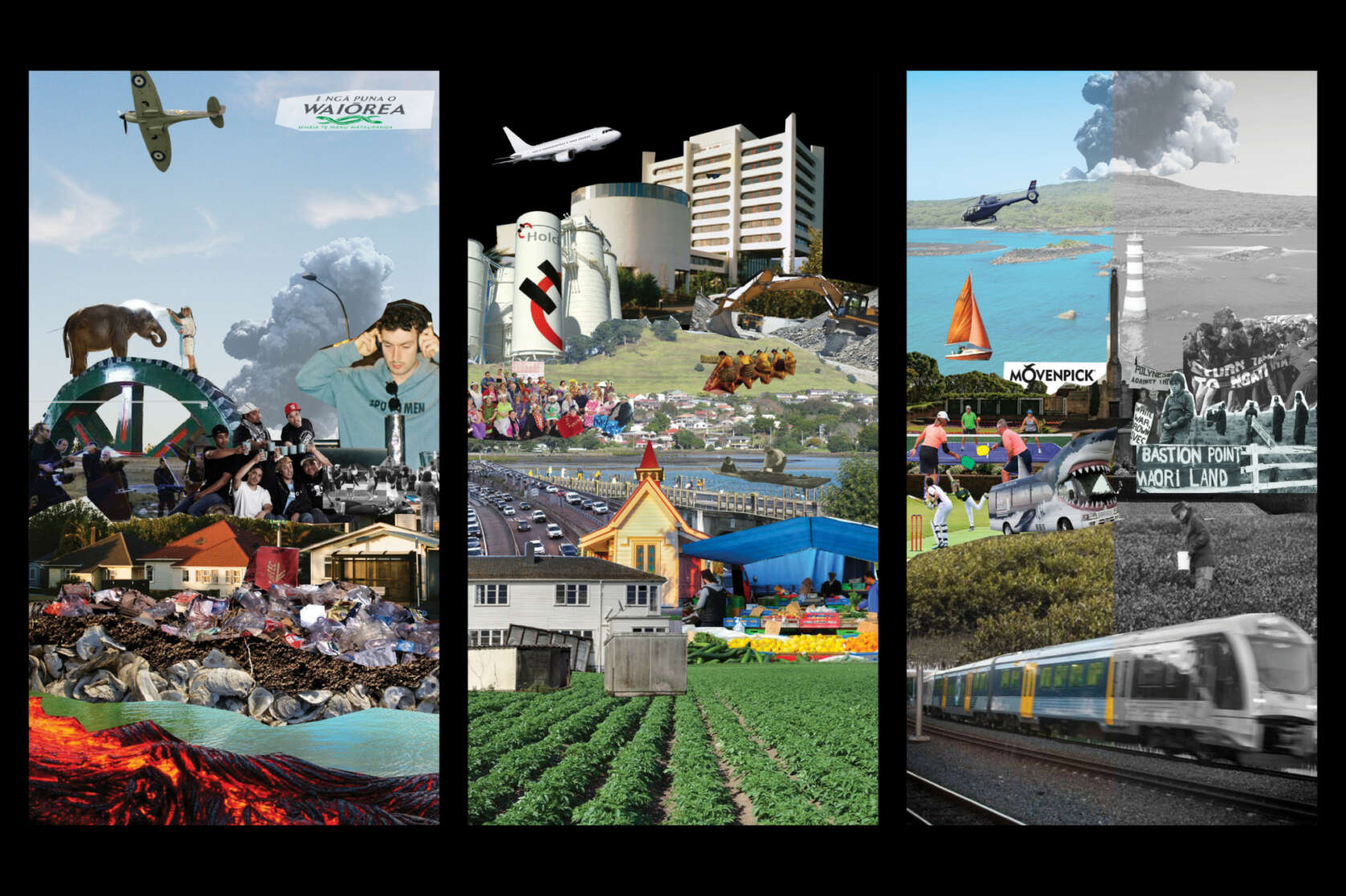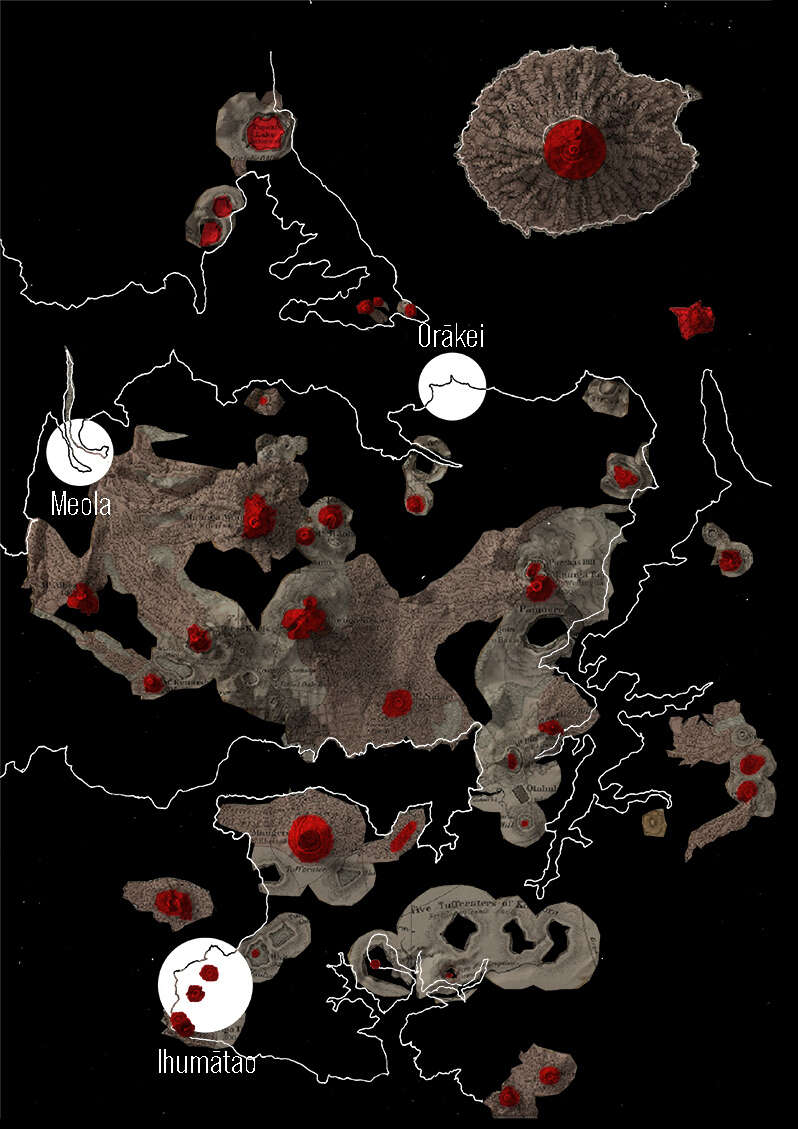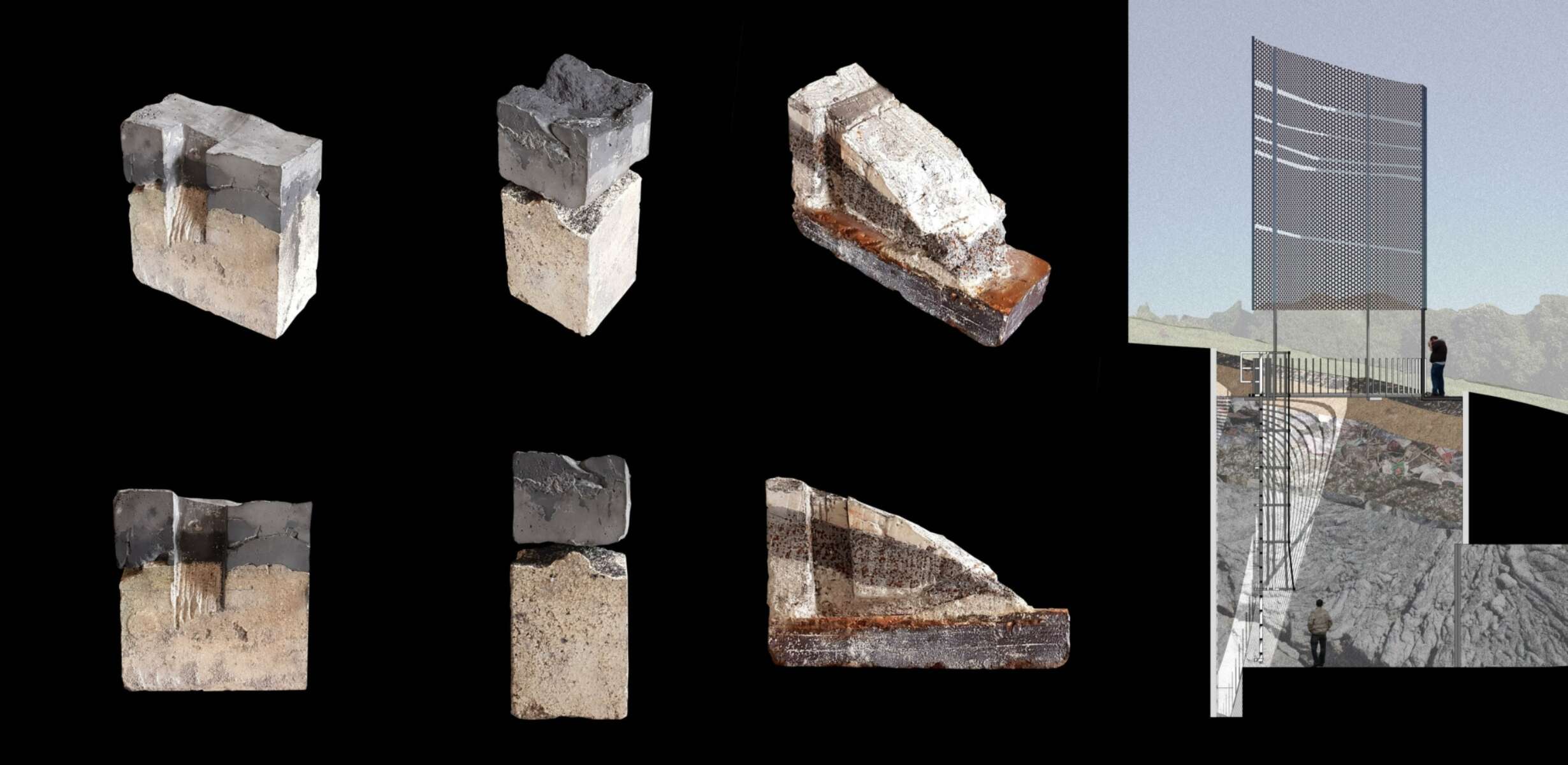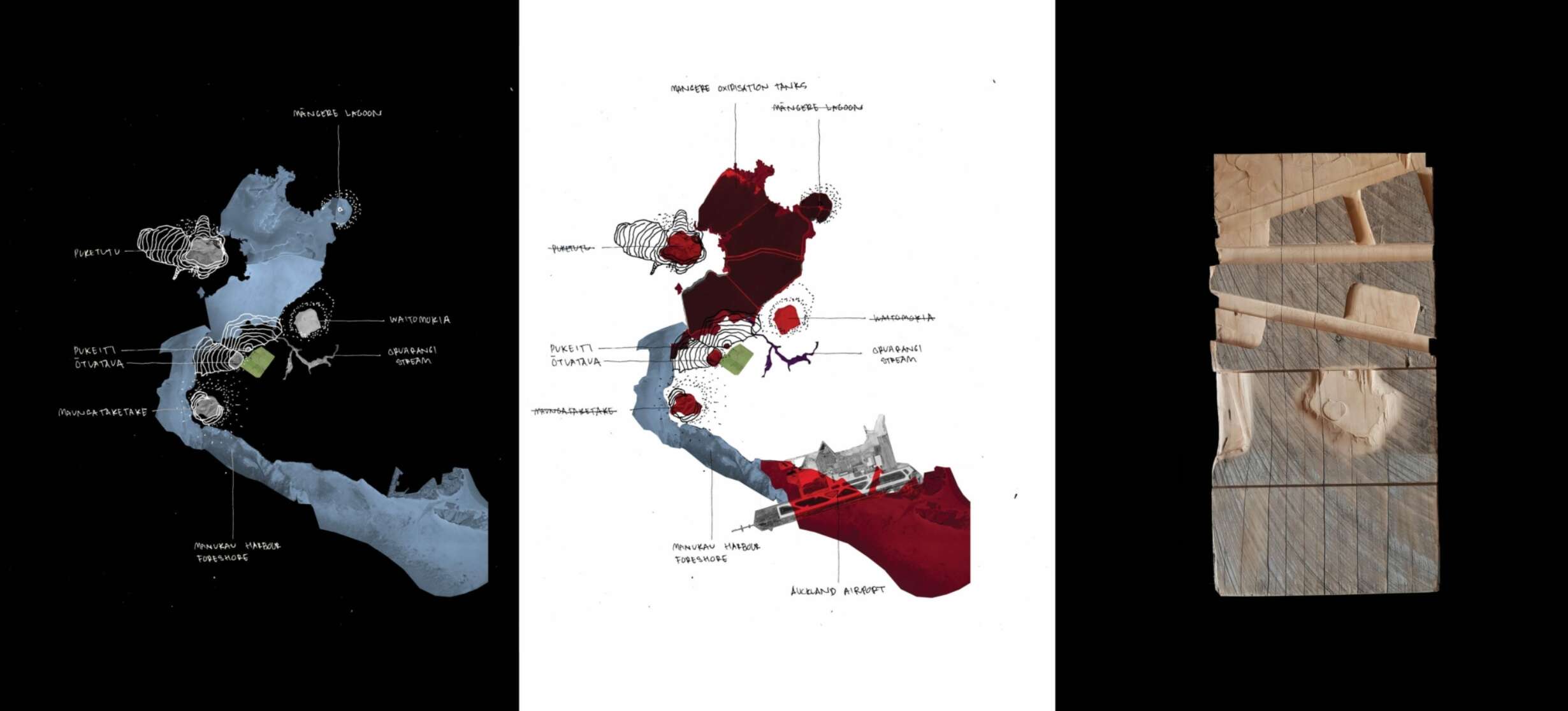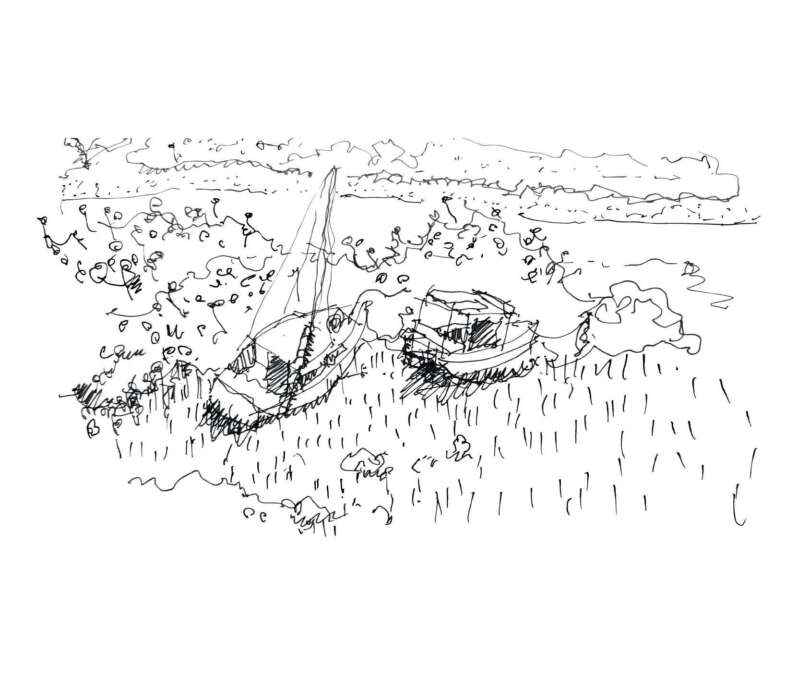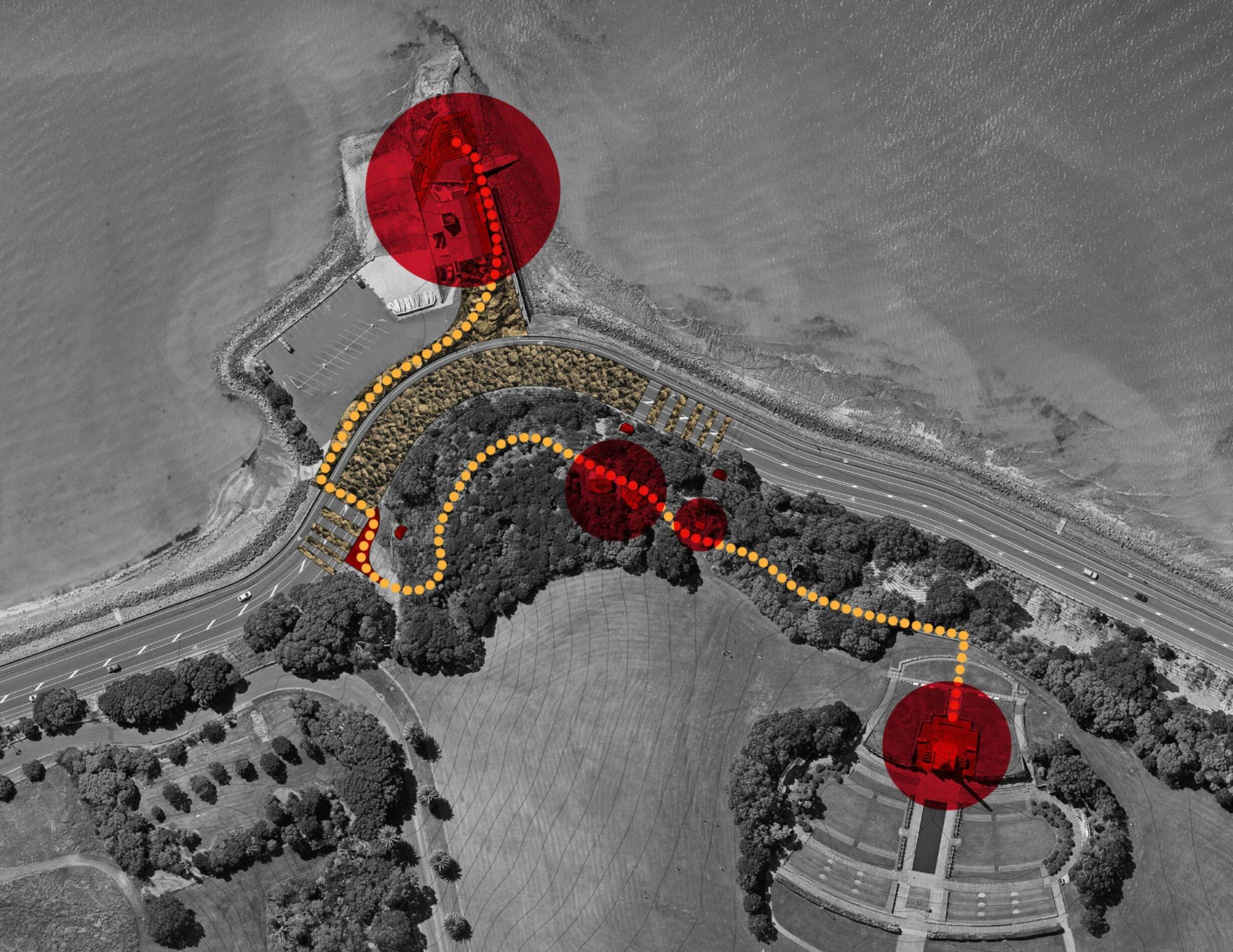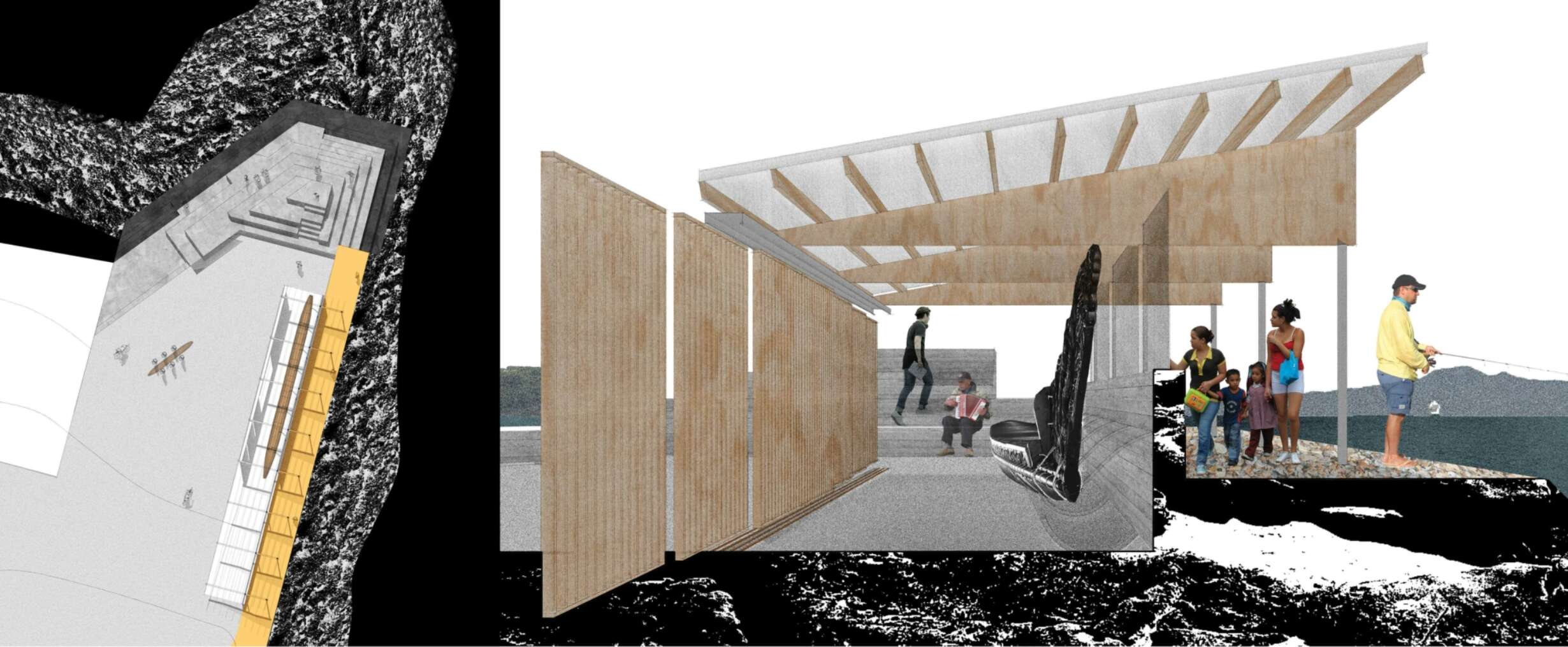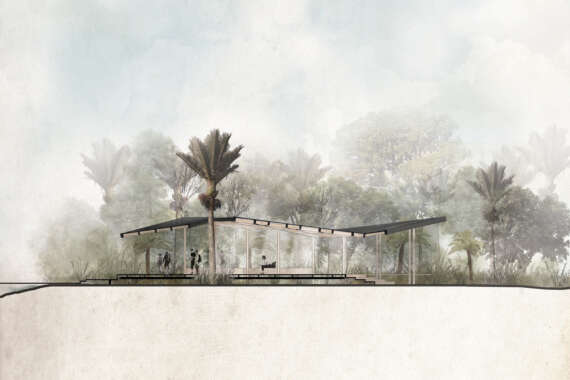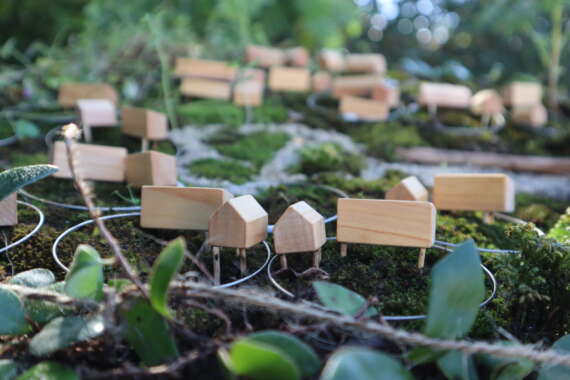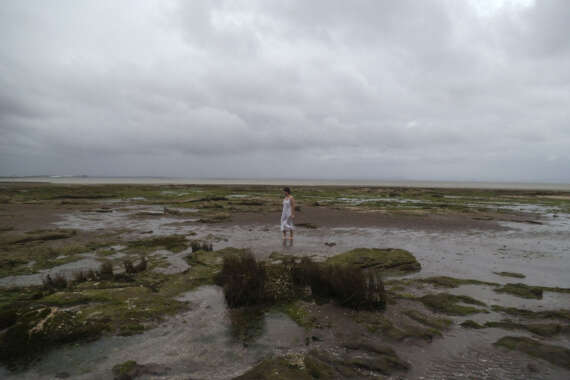The city of Tāmaki Makaurau/Auckland has had a highly contested and conflicted history, largely due to its desirability as a settlement with abundant natural resources and ideal location. The common threads of contest and conflict, particularly between Māori and European populations, have been deposited on sites throughout the city. This thesis aims to analyse and respond to these histories at three different sites within the city. The process of analysis and response has explored the following question:
How can creative methods discover and extract contested histories, and how can these histories be revealed and enhanced by architecture?
The three sites explored within this thesis are representative of Auckland’s geographical, cultural, and political history: Meola Reef, Ihumātao, and Bastion Point.
Meola Reef is a physical stratification, where different layers of the landscape each represent a moment on the site.
Ihumātao represents a timeline of how the use of land has been abused over time but also how modern protests and resistance are fighting against this change.
Bastion Point brings the political layer to the forefront, highlighting how the Māori people were fragmented and marginalised by colonial powers.
